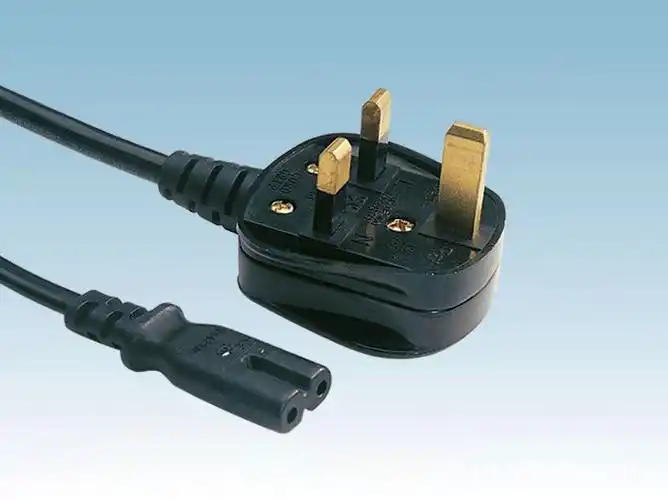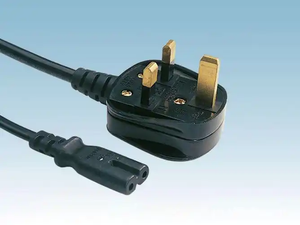
Key points for inspection of power cords and plugs Inspection and certification services for factory audits
Power cords and plugs are the most commonly used electrical components in daily work and life. Their quality directly affects the service life of electrical appliances and the personal safety of users. Therefore, during the inspection process, systematic and rigorous inspections must be carried out, and particular attention should be paid to safety and performance key points. Based on the actual experience of factory inspection and finished product sampling, this article systematically introduces the inspection key points of power cords and plugs from multiple aspects such as quality system, inspection items, testing methods, and common defects. It is suitable for quality engineers, inspectors, and purchasing managers for reference and use.
I. Factory Audit and Quality Management System Requirements
Before commencing mass production, it is recommended to conduct a supplier evaluation and pre-production factory inspection to assess whether the factory has established and implemented a quality management system compliant with ISO 9001 standards, and whether it has established standardized incoming material inspection (IQC), process inspection (IPQC), and final inspection (FRI) procedures. The inspectors should clearly define the product technical specifications, certification requirements (such as CCC, UL, VDE, CE, etc.) and customer acceptance standards (such as AQL sampling schemes), and prepare the necessary testing equipment and tools in advance.
II. Inspection Items and Execution Standards for Power Cables
1. Appearance and Structure Inspection:
The wire core should be free from any exposure. The stripping and tin-plating process should be carried out properly, without any damage, oxidation, deformation or knotting.
The terminals are securely connected, with a uniform and shiny coating, and there is no rust.
The thickness of the insulation layer and the sheath is uniform, without eccentricity, warping, blistering or unevenness.
The characters are clear and the content is complete. After being tested by wiping with a damp cloth (10 times), they remain legible.
The color meets the requirements and there is no color difference, which is convenient for assembly and identification.
2. Electrical Performance Test:
Direct Current Resistance of Conductors: Measured using a direct current resistance bridge to determine whether the conductor material and cross-sectional area comply with the standards;
Pressure resistance test: Using a high-voltage test bench to apply the specified voltage, to evaluate the insulation strength;
Insulation resistance: Measure using an insulation resistance tester (500V DC), and the resistance value should be no less than 5 MΩ;
Weldability test (if applicable): The electronic wire is tin-plated at 260 ± 10℃ for 2 seconds. The tin coating should be smooth and firmly attached.
3. Dimensions and Mechanical Properties:
Measure the cross-sectional area, wire diameter, outer diameter, etc. of the conductor using a low-power projector or calipers to ensure they meet the tolerance requirements;
Check the adhesion (between the core wire and the insulation layer) to prevent wire breakage due to excessive tightness or copper exposure due to insufficient tightness.
4. Common quality defects (classified by AQL defects):
Severe defects (Critical Defects): Cracked insulation exposing the copper, short circuit/open circuit, breakdown under voltage;
Main Defects: Deviation in wire diameter, conductor oxidation, blurred printing, poor adhesion;
Minor Defects: Minor dirtiness, non-critical dimension deviations, slight color variations.
III. Inspection Items and Execution Standards for Connectors
1. Appearance and Structure Inspection:
The type and size of the connector must comply with the national standards of the destination country (such as US standards, European standards, British standards, etc.);
The insert has no deformation or oxidation, and the plastic body has no damage, cracks, bubbles or exposed copper.
The logo should be clear and include the manufacturer's name, trademark, specifications, and certification symbols, and it should not fall off after being wiped with water or gasoline.
2. Electrical and Safety Tests:
Withstand Voltage Test: Apply standard voltage between the terminals and between the terminals and the body, with no breakdown phenomenon.
Polarity conduction test: Use a multimeter to verify that the terminals are correctly connected to the corresponding core wires.
Insulation resistance: Not less than 5 MΩ;
Mechanical strength: The plug structure should be sturdy and capable of withstanding the stresses during installation and usage.
3. Dimensions and Certification Compliance:
Use measuring tools such as calipers to measure the key dimensions of the plug, ensuring they comply with the drawings or technical specifications.
Ensure that the plug has the corresponding certification mark (such as UL, CE, CCC, etc.) and is compatible with the product specifications.
4. Common Quality Defects:
Serious Defects: The plug design does not conform to national standards, failure in withstand voltage test, and incorrect polarity connection;
Main defects: Insertion piece deformed, lacking marking, size out of tolerance;
Minor defects: Slight scratches on the surface, and injection defects in non-functional areas.
IV. Summary and Inspection Suggestions
The inspection of power cords and plugs should be closely aligned with international electrical safety standards and the specific requirements of the customers. It is recommended to strictly follow the AQL sampling procedure during routine inspections and conduct independent evaluations of high-risk batches through third-party inspection services on a regular basis. During the factory inspection stage, particular attention should be paid to the incoming material control of the factory, the calibration and operation records of production line testing equipment, and whether an effective traceability mechanism has been established.
Only by integrating source verification, process control and final product inspection can we systematically ensure the compliance, safety and reliability of power cords and plugs, and effectively reduce the risks of quality disputes and market recalls.
分享这个商品

Key points for inspection of power cords and plugs Inspection and cert
Power cords and plugs are the most commonly used electrical accessories in daily life. Their quality directly affects the personal safety of users.
